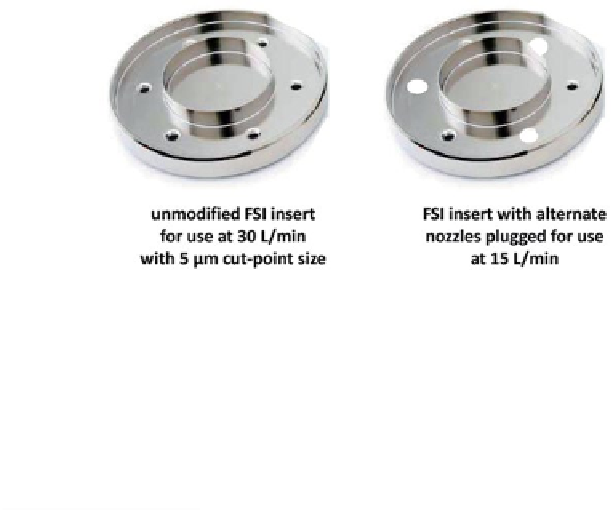Biomedical Engineering Reference
In-Depth Information
Fig. 10.63
Modified FSI insert used by Tservistas et al. for nebulizer aerosol measurements at
15 L/min (
From
[
52
]—
courtesy of M. Tservistas
)
Table 10.17
Comparative times for 6-replicate abbreviated and full-resolution impactor
measurements compared with laser diffractometry reported by Tservistas et al
.
in the context of
nebulizer aerosol assessment (
From
[
52
]—
courtesy of M. Tservistas
)
Time allocation (h)
Measurement
Assessment method
API analysis
Data processing
Total
LD
1.5
N/A
1.0
2.5
FSI (cooled)
7.0
6.5
1.0
14.5
FSI (ambient)
5.0
6.5
1.0
12.5
NGI
8.0
18.0
2.0
28.0
associated with nebulizer-generated aqueous droplet size measurements, as the
result of less pronounced heat transfer-related evaporative bias.
Comparative data for time savings provided by Tservistas et al
.
(Table
10.17
) add
further evidence of approximately 50% gain in productivity with the cooled FSI
compared with the NGI.
As might be expected, LD was by far the most rapid technique; however, this
measurement method is not directly related to mass of API and is therefore limited
to the assessment of solutions, rather than more complex formulations (i.e., sus-
pensions, emulsions, liposomal forms, etc.) that may be encountered with this class
of OIP [
58
].
10.8
Assessing the Performance of AIM Systems
Based on the NGI
Since the NGI in its standard design does not have movable stages [
14
], the devel-
opment of an abbreviated system based on NGI geometry at first sight seems to be
unattractive and possibly a difficult process. However, this CI has a horizontal












Search WWH ::

Custom Search